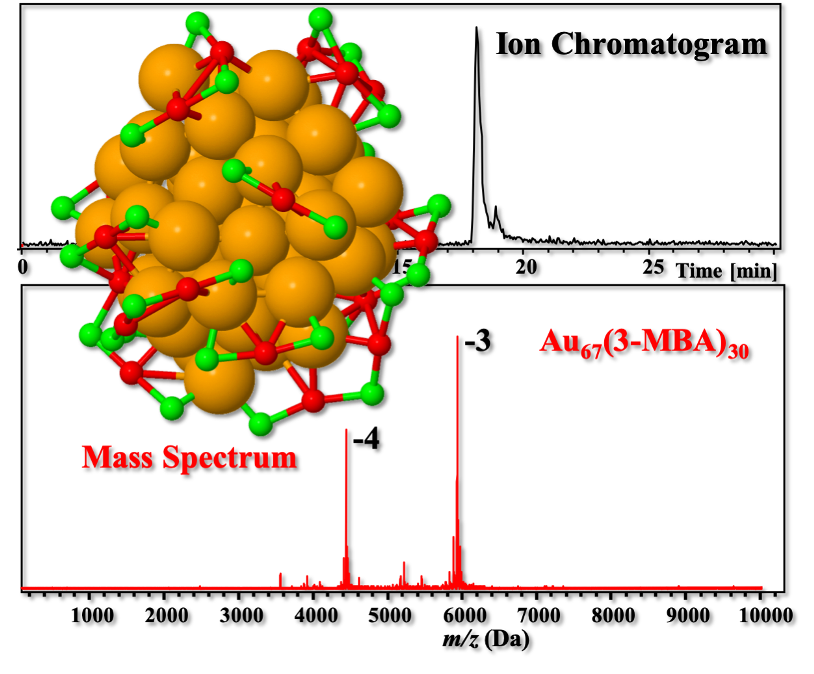Gold clusters protected by 3-MBA ligands (MBA = mercaptobenzoic acid, -SPhCO2H) have attracted recent interest for their unusual structures and advantageous ligand-exchange and bioconjugation properties. Azubel et al. first determined the core structure of an Au68-complex, which was estimated to have 32 ligands (3-MBA groups). To explain the exceptional structure-composition and reaction properties of this complex, and its larger homologs, Tero et al. proposed a “dynamic stabilization” via carboxyl O-H--Au interactions. Herein, we report the first results of an integrated LC/MS analysis of unfractionated samples of gold / 3-MBA clusters, spanning the narrow size range 13.4 to 18.1 kDa. Using high-throughput procedures adapted from bio-macromolecule analyses, we show that integrated capillary HPLC-ESI-MS, based upon aqueous-methanol mobile phases and ion-pairing reverse-phase chromatography, can separate several major components from the nanoclusters mixture that may be difficult to resolve by standard native gel electrophoresis due to their similar size and charge. For each component, one obtains a well-resolved mass spectrum, nearly free of adducts or signs of fragmentation. A consistent set of molecular mass determinations is calculated from detected charge-states tunable from 3- (or lower), to 2+ (or higher). One thus arrives at a series of new compositions (n, p) specific to the Au/3-MBA system. The smallest major component is assigned to the previously unknown (48, 26); the largest one is evidently (67, 30), vs. the anticipated (68, 32). Various explanations for this discrepancy are considered. A prospective is given for the several members of this novel series, along with a summary of the advantages and present limitations of the micro-scale integrated LC/MS approach to characterize such metallic-core macro-molecules, and their derivatives.

